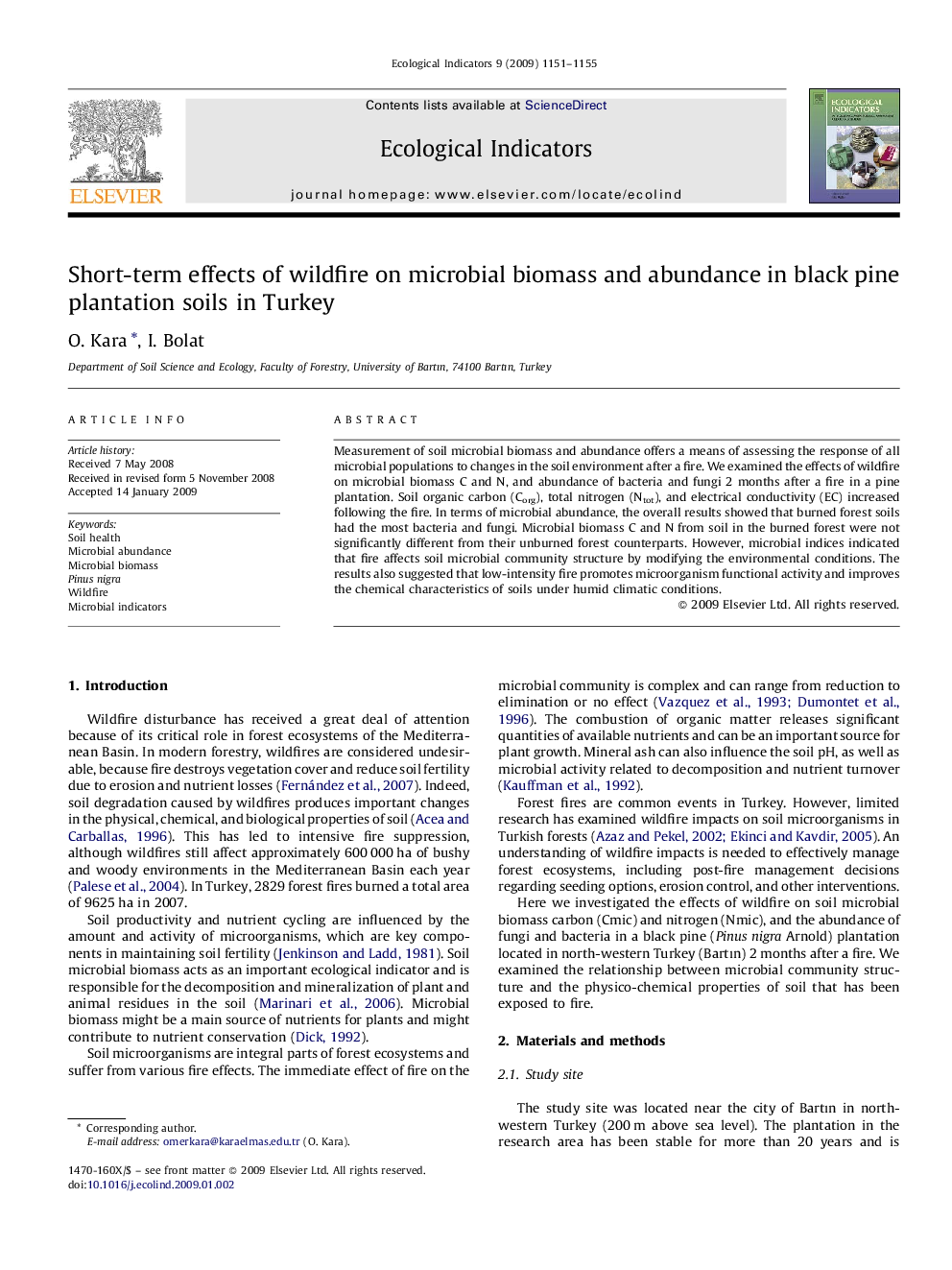| Article ID | Journal | Published Year | Pages | File Type |
|---|---|---|---|---|
| 4374342 | Ecological Indicators | 2009 | 5 Pages |
Measurement of soil microbial biomass and abundance offers a means of assessing the response of all microbial populations to changes in the soil environment after a fire. We examined the effects of wildfire on microbial biomass C and N, and abundance of bacteria and fungi 2 months after a fire in a pine plantation. Soil organic carbon (Corg), total nitrogen (Ntot), and electrical conductivity (EC) increased following the fire. In terms of microbial abundance, the overall results showed that burned forest soils had the most bacteria and fungi. Microbial biomass C and N from soil in the burned forest were not significantly different from their unburned forest counterparts. However, microbial indices indicated that fire affects soil microbial community structure by modifying the environmental conditions. The results also suggested that low-intensity fire promotes microorganism functional activity and improves the chemical characteristics of soils under humid climatic conditions.
